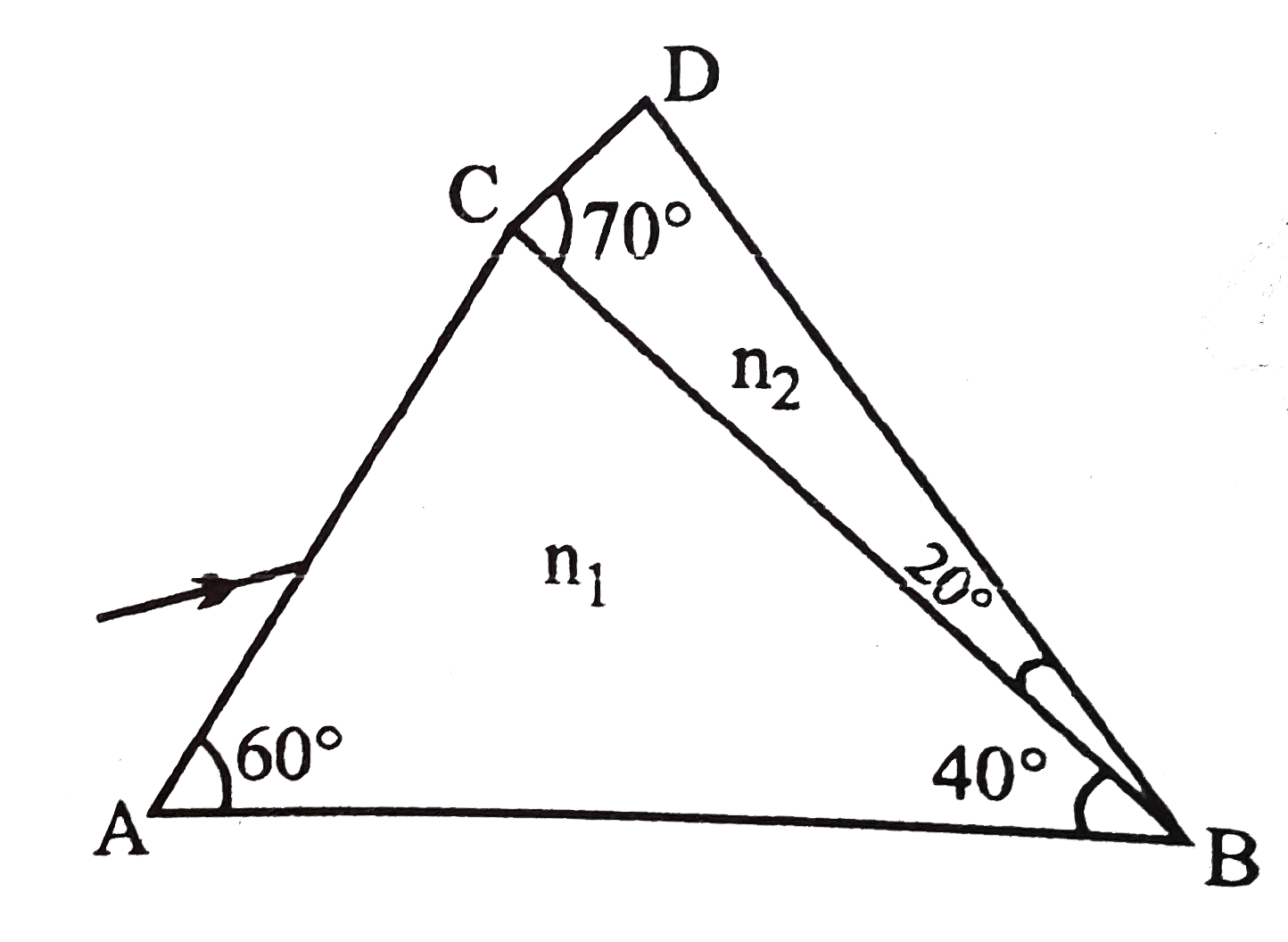During an experiment, an ideal gas is found to obey a condition p2ρ=constant. (ρ = density of the gas). The gas is initially at temperature (T), pressure (p) and density ρ. The gas expands such that density changes to ρ/2.Solution in Gujrati
(a)The pressure of the gas changes to √2P
(b)The temperature of the gas changes to √2T.
(c)The graph of the above process on the P−T diagram is parabola.
(d)The graph of the above process on the P−T diagram is hyperbola.
The correct Answer is:B, D
PV=nRT
P∝ρT ……….(i) T∝1√ρ …… (ii) T∝1√ρ …. (iii)
Topper's Solved these Questions
- GEOMETRICAL OPTICSBOOK - ALLEN CHAPTER - GEOMETRICAL OPTICSEXERCISE - EXERCISE -01
65 Videos
- GEOMETRICAL OPTICSBOOK - ALLEN CHAPTER - GEOMETRICAL OPTICSEXERCISE - EXERCISE -02
82 Videos
- GEOMETRICAL OPTICSBOOK - ALLEN CHAPTER - GEOMETRICAL OPTICSEXERCISE - subjective
14 Videos
- CURRENT ELECTRICITYBOOK - ALLEN CHAPTER - CURRENT ELECTRICITYEXERCISE - EX.II
66 Videos
- GRAVITATIONBOOK - ALLEN CHAPTER - GRAVITATIONEXERCISE - EXERCISE 4
9 Videos
Similar Questions
On an X temperature scale, water freezes at −125.0∘X and boils at 375.0∘X. On a Y temperature scale, water freezes at −70.0∘Y and boils at −30.0∘Y. The value of temperature on X-scale equal to the temperature of 50.0∘Y on Y-scale is
View SolutionA triangular plate has two cavities , one square and one rectangular as shown in figure . The plate is heated.
_E01_066_Q01.png)
View SolutionA prism of refractive index n1 & another prism of reactive index n2 are stuck together without a gap as shown in the figure.The angle of the prisms are as shown. n1&n2depend onλ,the wavelength of light according to n1=1.20+10.8×104λ2&n2=1.45+1.80×104λ2 where λ is in nm.

(i)Calculate the wavelength λ0for which rays incident at any angle on the interfaceBCpass through without bending at that interface.
(ii) for light of wavelength λ0,find the angle of incidencei on faceACsuch that the deviation produced by the combination of prism is minimum.
View SolutionIn the Bohr's model of hy drogen atom, the electron moves around the nucleus in a circular orbit of radius 5×10−11m. Its time period is 1.5×10−16s. The current associated with the electron motion is:-
View SolutionAssertion : The difference in the value of acceleration due to gravity at pole and equator is proportional to square of angular velocity of earth.
Reason : the value of acceleration due to gravity is minimum at the equator and maximum at the pole.
View SolutionDuring an experiment, an ideal gas is found to obey a condition (p^2)/(rho) = "constant" . ( rho = density of the gas). The gas is initially at temperature (T), pressure (p) and density rho . The gas expands such that density changes to rho//2 .
View SolutionAt a constant temperature, what is the relation between pressure P and density ρ of gas?
View SolutionAt a given temperature, the pressure of an ideal gas of density ρ is proportional to
View SolutionAn ideal gas expands following a relation P2ρ= constant, where P = pressure and ρ = density of the gas. The gas is initially at temperature T and density ρ and finally its density becomes ρ3.
(a) Find the final temperature of the gas. (b) Draw the P – T graph for the process.
View SolutionThe pressure and density of a gas (γ=1.5) changes for (P,ρ)→(P',ρ') during adiabatic changes if ρ'/ρ=32,thenP'/P will be
View SolutionIt P is the pressure and rho is the density of a gas, then P and rho are realted as :
View SolutionDuring an experiment, an ideal gas is found to obey a condition p2ρ=constant. (ρ = density of the gas). The gas is initially at temperature (T), pressure (p) and density ρ. The gas expands such that density changes to ρ/2.
View Solutionदाब (p), परम ताप (T) एवं घनत्व (ρ) के पदों में किसी गैस का समीकरण है
View SolutionThe pressure and density of gas (γ=75) changes adiabatically from (P,ρ) to (P',ρ'). If ρ'ρ=32, then find the ratio of P'P :
View SolutionDuring an experiment, an ideal gas is found to obey a condition P2ρ constant [ρ = density of the gas]. The gas is initially at temperature. T, pressure P and density ρ . The gas expands such that density changes to ρ2
View SolutionIf the pressure, temperature and density of an ideal gas are denoted by P, T and ρ, respectively, the velocity of sound in the gas is
View Solution
